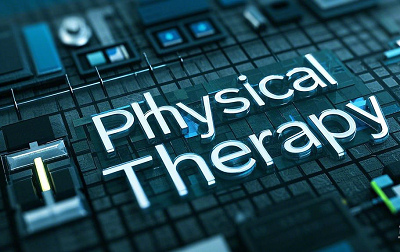Chronic Prostatitis Physical Therapy: Effective Strategies for Relief and Recovery
Chronic prostatitis, also known as chronic pelvic pain syndrome (CPPS), is a condition that affects many men worldwide. It is characterized by long-term inflammation and discomfort in the prostate gland, often accompanied by symptoms such as pelvic pain, frequent urination, painful ejaculation, and sexual dysfunction. While the condition can be challenging to treat, physical therapy has emerged as a valuable tool in managing and alleviating the symptoms of chronic prostatitis. In this article, we will explore how physical therapy can provide relief and improve quality of life for those suffering from this condition.

What is Chronic Prostatitis?
Chronic prostatitis is a condition that causes persistent inflammation of the prostate, often without a clear infectious cause. It is one of the most common urological disorders in men, particularly affecting those between the ages of 30 and 50. While the exact cause of chronic prostatitis is not fully understood, it is believed to involve a combination of factors, including pelvic muscle dysfunction, nerve irritation, and pelvic floor tension.
How Physical Therapy Can Help with Chronic Prostatitis
Physical therapy has been shown to be an effective treatment for chronic prostatitis, especially when traditional medications and therapies have not provided adequate relief. The goal of physical therapy for prostatitis is to address the underlying muscle dysfunction and tension in the pelvic area, which can contribute to pain and discomfort.
1. Pelvic Floor Muscle Exercises
The pelvic floor muscles play a crucial role in the function of the prostate and urinary system. In men with chronic prostatitis, these muscles are often tense, weak, or imbalanced, leading to increased pressure on the prostate and surrounding structures. Pelvic floor exercises, such as Kegel exercises, can help strengthen and relax these muscles, improving blood flow, reducing pressure, and alleviating pain.
A trained physical therapist can guide you through these exercises and teach you how to properly engage your pelvic floor muscles. These exercises are typically done in sets and can be performed at home once you’ve learned the correct technique.
2. Trigger Point Release Therapy
Trigger points are tight, sensitive areas of muscle tissue that can cause pain and discomfort. In individuals with chronic prostatitis, trigger points in the pelvic floor muscles and surrounding tissues can refer pain to the prostate, bladder, and lower abdomen. A physical therapist can use manual techniques, such as myofascial release or deep tissue massage, to release these trigger points and reduce pain and tension in the pelvic area.
Trigger point release therapy can be especially effective for individuals who experience localized pelvic pain or discomfort during sexual activity, urination, or sitting for prolonged periods.
3. Posture and Alignment Correction
Poor posture and misalignment of the spine and pelvis can contribute to pelvic floor dysfunction and exacerbate symptoms of chronic prostatitis. Physical therapy can help improve posture and alignment through specific stretches and strengthening exercises designed to target the muscles of the lower back, hips, and pelvis.
By correcting postural imbalances, physical therapy can reduce strain on the pelvic floor and help alleviate pain associated with chronic prostatitis. A physical therapist can provide guidance on proper posture and suggest modifications to daily activities to prevent further strain on the pelvic region.
4. Biofeedback Therapy
Biofeedback therapy is a technique that helps individuals become more aware of their pelvic floor muscle activity. Using sensors that measure muscle tension, biofeedback provides real-time feedback on how well the pelvic floor muscles are functioning. This information can help patients learn how to properly relax or contract their pelvic muscles, improving control over the pelvic region and reducing pain.
Biofeedback therapy is often used in conjunction with other physical therapy techniques to provide a comprehensive approach to managing chronic prostatitis symptoms.
5. Stretching and Relaxation Techniques
Tightness and tension in the muscles surrounding the prostate and pelvic floor can contribute to chronic prostatitis symptoms. Stretching exercises for the hips, thighs, and lower back can help alleviate muscle tightness and improve flexibility in the pelvic region. Relaxation techniques, such as deep breathing and meditation, can also be effective in reducing stress and muscle tension, which can worsen prostatitis symptoms.
How Physical Therapy Complements Other Treatments
While physical therapy can be highly effective on its own, it is often used in combination with other treatments for chronic prostatitis. Medications, such as alpha-blockers and anti-inflammatory drugs, may be prescribed to reduce pain and inflammation. In some cases, lifestyle changes, such as dietary modifications, stress management, and improved sleep hygiene, can further support recovery.
Physical therapy can enhance the effectiveness of these treatments by addressing the musculoskeletal aspects of the condition, providing long-term relief, and preventing recurrence.
Conclusion
Chronic prostatitis is a complex condition that can significantly impact a man’s quality of life. However, physical therapy offers a non-invasive, effective way to manage and alleviate the symptoms of this condition. Through techniques such as pelvic floor muscle exercises, trigger point release therapy, posture correction, biofeedback, and relaxation exercises, physical therapy can help reduce pain, improve function, and enhance overall well-being.
If you are suffering from chronic prostatitis, consider consulting with a physical therapist who specializes in pelvic health to explore how physical therapy can be integrated into your treatment plan. With the right approach, you can regain control of your health and enjoy a better quality of life.
For those who are dealing with chronic prostatitis and seeking additional support, it’s important to explore all available treatment options. In some cases, herbal treatments like Diuretic and Anti-inflammatory Pill may offer complementary benefits by addressing inflammation and promoting urinary health. Combining modern physical therapy with traditional remedies can provide a holistic approach to managing chronic prostatitis and improving overall prostate health.
You may also be interested in:
Can Bee Pollen Aid in Managing Chronic Prostatitis? Exploring Its Health Benefits and Effectiveness
Does Prostate Massage Work for Treating Chronic Prostatitis?



